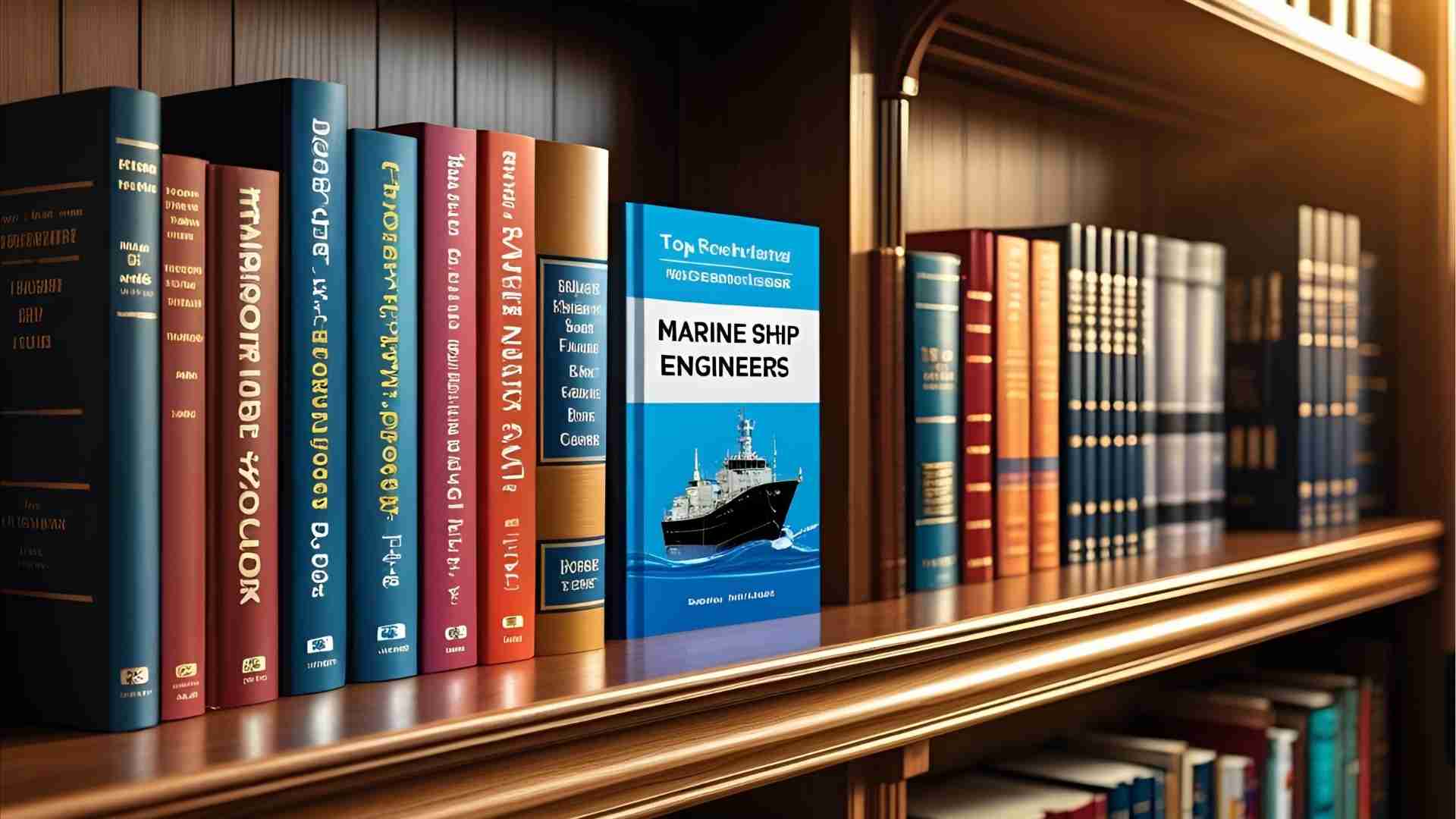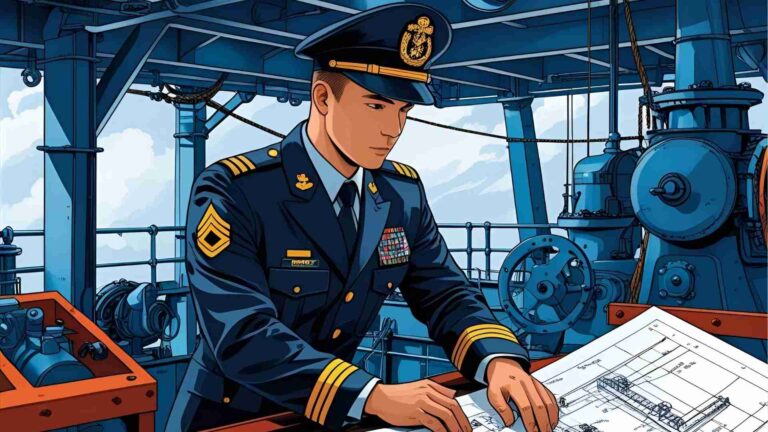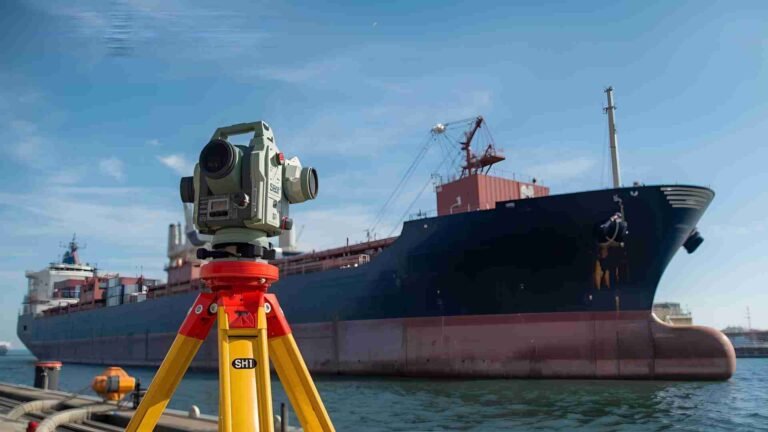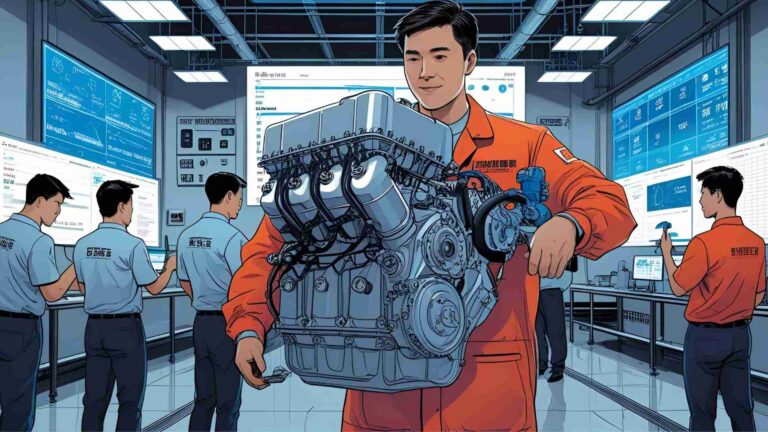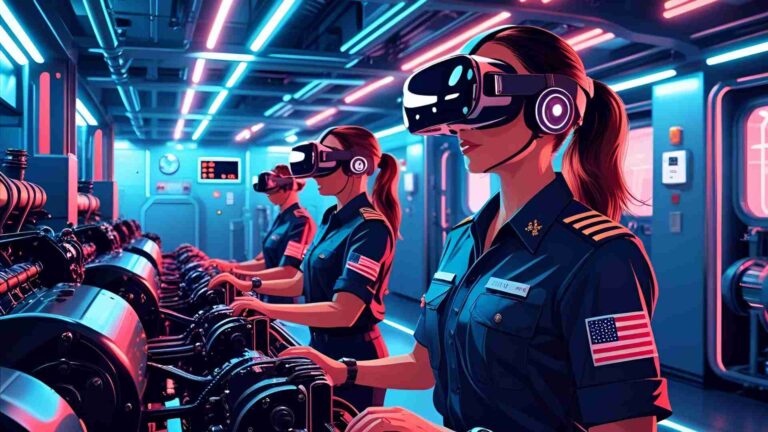Top-Rated Books for Marine Ship Engineers
Discover top-rated books for marine ship engineers, covering propulsion, auxiliary systems, and naval architecture to boost your career.
Marine ship engineers are the backbone of maritime operations, ensuring vessels run smoothly, safely, and efficiently. Their role demands a deep understanding of complex systems like propulsion, auxiliary machinery, and electrical systems, alongside compliance with international regulations like MARPOL. For students, professionals, and aspiring engineers, the right books provide critical knowledge, practical insights, and exam preparation tools. This guide explores the top-rated books for marine ship engineers, with a focus on foundational texts, specialized topics like purifiers, pumps, and valves, and real-world applications. Designed for a second-year marine engineering student in the Philippines or any professional seeking to advance their career, this article also includes practical advice, industry insights, and resources to enhance technical expertise.
Why Books Are Essential for Marine Ship Engineers
Marine engineering is a demanding field that combines theoretical knowledge with hands-on skills. Engineers must maintain and troubleshoot propulsion systems, auxiliary machinery, and electrical systems under challenging conditions at sea. Books provide:
- Comprehensive Knowledge: Covering core principles, system operations, and regulatory compliance.
- Practical Guidance: Offering troubleshooting techniques and maintenance procedures.
- Exam Preparation: Supporting certifications like Officer of the Watch (OOW) and Chief Engineer exams.
- Career Advancement: Equipping engineers with skills to handle modern technologies like LNG engines and hybrid propulsion.
For a second-year student already familiar with Introduction to Marine Engineering by D.A. Taylor and MARPOL regulations, the next step is to deepen knowledge in specialized areas like purifiers, pumps, and valves while building a strong foundation for professional growth.
Top-Rated Books for Marine Ship Engineers
Below is a curated list of the most recommended books for marine ship engineers, focusing on foundational texts, specialized machinery, and exam preparation. Each book is evaluated for its content, practical applications, and relevance to modern maritime engineering.
1. Reed’s Marine Engineering Series
The Reed’s Marine Engineering Series is widely regarded as the gold standard for marine engineering education. This multi-volume series covers a broad spectrum of topics, making it ideal for students and professionals preparing for competency exams.
- Volume 8: General Engineering Knowledge for Marine Engineers by Paul A. Russell, Leslie Jackson, and Thomas D. Morton
- Overview: This volume provides a comprehensive overview of engineering principles, including thermodynamics, mechanics, and material science, tailored for marine applications.
- Why It’s Valuable: Covers essential topics like heat transfer, fluid mechanics, and safety systems, with practical examples for shipboard applications.
- Price: Approximately $50–$60 (paperback).
- Best For: Students preparing for OOW exams and engineers seeking a broad knowledge base.
- Volume 12: Motor Engineering Knowledge for Marine Engineers by Paul A. Russell
- Overview: Focuses on marine diesel engines, covering operation, maintenance, and troubleshooting.
- Why It’s Valuable: Includes detailed sections on fuel systems, turbochargers, and engine performance, with diagrams for clarity.
- Price: Approximately $45–$55 (paperback).
- Best For: Engineers working with propulsion systems and those preparing for motor engineering exams.
- Why Choose Reed’s?
- Aligned with STCW (Standards of Training, Certification, and Watchkeeping) requirements.
- Regularly updated to reflect industry standards.
- Practical exercises and exam-focused content.
Case Study: A maritime training academy in Singapore reported a 15% increase in OOW exam pass rates after integrating Reed’s Volume 8 into its curriculum, citing its clear explanations and practical focus.
2. Marine Auxiliary Machinery by H.D. McGeorge
- Overview: This cornerstone text covers auxiliary systems like pumps, purifiers, compressors, and boilers. It includes detailed diagrams and maintenance procedures, making it ideal for understanding complex machinery.
- Why It’s Valuable:
- In-depth coverage of purifiers, including centrifugal separation principles and maintenance schedules.
- Explains pump types (centrifugal, reciprocating, gear) and valve operations (gate, globe, ball).
- Practical troubleshooting guides for common shipboard issues.
- Price: Approximately $70–$80 (paperback).
- Best For: Students and engineers seeking detailed knowledge of auxiliary systems, especially purifiers, pumps, and valves.
Real-World Application: A second engineer on a container ship used Marine Auxiliary Machinery to diagnose a purifier bowl imbalance, reducing downtime by 50% compared to traditional trial-and-error methods.
3. Introduction to Naval Architecture by E.C. Tupper
- Overview: This foundational text explores ship design, stability, and hydrodynamics, critical for understanding how engineering systems integrate with vessel performance.
- Why It’s Valuable:
- Covers ship stability, resistance, and propulsion, linking theory to practical engineering decisions.
- Includes case studies on ship design failures and successes.
- Price: Approximately $60–$75 (paperback).
- Best For: Students transitioning from basic engineering to advanced naval architecture concepts.
Example: Cadets at the Australian Maritime College use this book to understand how hull design impacts engine performance, preparing them for interdisciplinary roles.
4. Marine Diesel Engines: Maintenance, Troubleshooting, and Repair by Nigel Calder
- Overview: A hands-on guide to diesel engine maintenance, covering fuel systems, cooling systems, and electrical components.
- Why It’s Valuable:
- Step-by-step troubleshooting for issues like fuel injector failures and overheating.
- Practical for both routine maintenance and emergency repairs.
- Price: Approximately $30–$40 (paperback).
- Best For: Engineers handling diesel propulsion systems and troubleshooting at sea.
Case Study: A bulk carrier crew resolved a fuel pump failure mid-voyage using Calder’s troubleshooting flowcharts, saving $10,000 in potential repair costs.
5. Practical Marine Electrical Knowledge by Dennis T. Hall
- Overview: This book focuses on marine electrical systems, including generators, switchboards, and motor controls, with an emphasis on practical applications.
- Why It’s Valuable:
- Detailed sections on electrical fault diagnosis and safety protocols.
- Covers modern systems like hybrid propulsion and LNG-powered vessels.
- Price: Approximately $80–$100 (hard to find, often second-hand).
- Best For: Engineers specializing in electrical systems and those preparing for Chief Engineer exams.
User Feedback: A Reddit user (mechtechuy) praised this book for its clarity in explaining complex electrical concepts, helping them pass their electrical engineering competency exam.
6. Marine Boilers by G.T.H. Flanagan
- Overview: A specialized text on marine boilers, covering design, operation, and maintenance of low- and high-pressure systems.
- Why It’s Valuable:
- Explains boiler water treatment, combustion processes, and safety checks.
- Includes troubleshooting guides for boiler malfunctions.
- Price: Approximately $50–$60 (paperback).
- Best For: Engineers responsible for boiler maintenance and safety compliance.
Real-World Application: A boiler failure on a tanker was resolved using Flanagan’s water treatment protocols, preventing costly corrosion damage.
7. Marine Engineering Workbook by William Hayler
- Overview: A practical workbook with exercises, scenarios, and problem-solving tasks for marine propulsion and auxiliary systems.
- Why It’s Valuable:
- Ideal for exam preparation with competency-based questions.
- Covers pumps and valves with practical maintenance scenarios.
- Price: Approximately $40–$50 (paperback).
- Best For: Students preparing for practical assessments and engineers honing troubleshooting skills.
Case Study: A training program incorporating this workbook improved trainees’ exam pass rate by 20%, as reported by a global shipping company.
Specialized Resources for Purifiers, Pumps, and Valves
For a second-year student seeking detailed knowledge of purifiers, pumps, and valves, the following resources are highly recommended:
- Marine Auxiliary Machinery by H.D. McGeorge: As mentioned, this book provides in-depth coverage of purifiers (centrifugal separation, bowl maintenance), pumps (centrifugal, gear, screw), and valves (gate, globe, check).
- Key Insight: Purifiers are essentially high-speed centrifugal separators that remove water and impurities from fuel or lubricating oil. Understanding bowl dynamics and maintenance schedules is critical.
- Diagram: Below is a simplified flow of a purifier system.
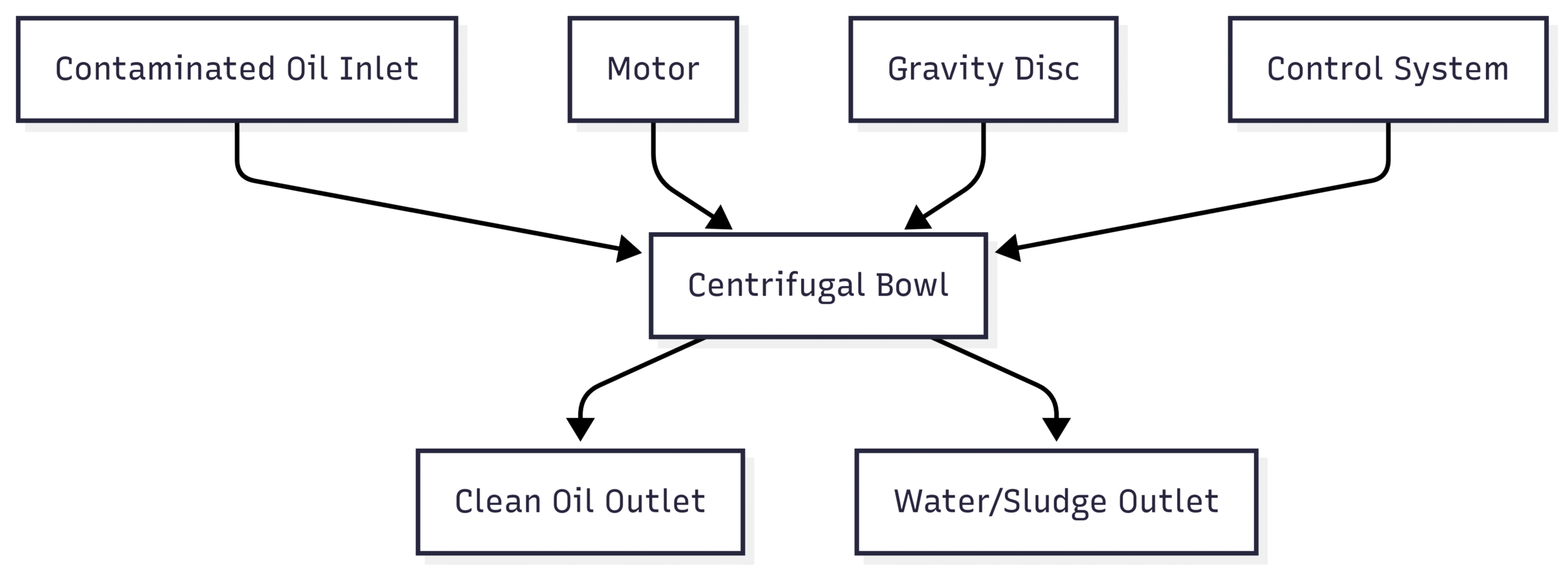
- Technical Service Manuals: As suggested by Reddit user skumarss, manuals from manufacturers like Alfa Laval or Westfalia provide detailed specifications for purifiers, including maintenance intervals and troubleshooting steps.
- Access: Check manufacturer websites or platforms like Scribd for downloadable PDFs.
- Example: Alfa Laval’s purifier manuals include exploded diagrams and step-by-step maintenance guides.
- Marine Engineering Workbook by William Hayler: Includes exercises on pump types (e.g., centrifugal vs. positive displacement) and valve maintenance, helping students master practical applications.
Table: Common Pump Types in Marine Engineering
| Pump Type | Applications | Advantages | Limitations |
|---|---|---|---|
| Centrifugal | Cooling water, ballast transfer | High flow, low maintenance | Low efficiency at low flow |
| Gear | Fuel oil, lubricating oil | Precise flow, high pressure | Limited to viscous fluids |
| Screw | Heavy fuel oil, sludge transfer | Handles high viscosity | Complex maintenance |
| Reciprocating | Boiler feed, bilge pumping | High pressure, variable flow | High maintenance requirements |
Complementary Resources and Tools
Beyond books, marine engineers benefit from additional resources and tools:
- Online Platforms:
- DieselShip: Offers past exam papers with answers, helping students focus on relevant topics.
- YouTube Channels: Channels like Marine Online provide videos on purifier maintenance and pump operations.
- Regulations: Websites like Regs4Ships or DNV provide access to IMO regulations (MARPOL, SOLAS, STCW).
- Tools:
- Diagnostic Tools: Multimeters for electrical systems and vibration analyzers for machinery.
- Software: CMMS (Computerized Maintenance Management Systems) for scheduling maintenance.
- Manuals: Manufacturer-specific manuals for engines (e.g., Wärtsilä, MAN) and pur彼此
Chart: Marine Engineer’s Learning Path
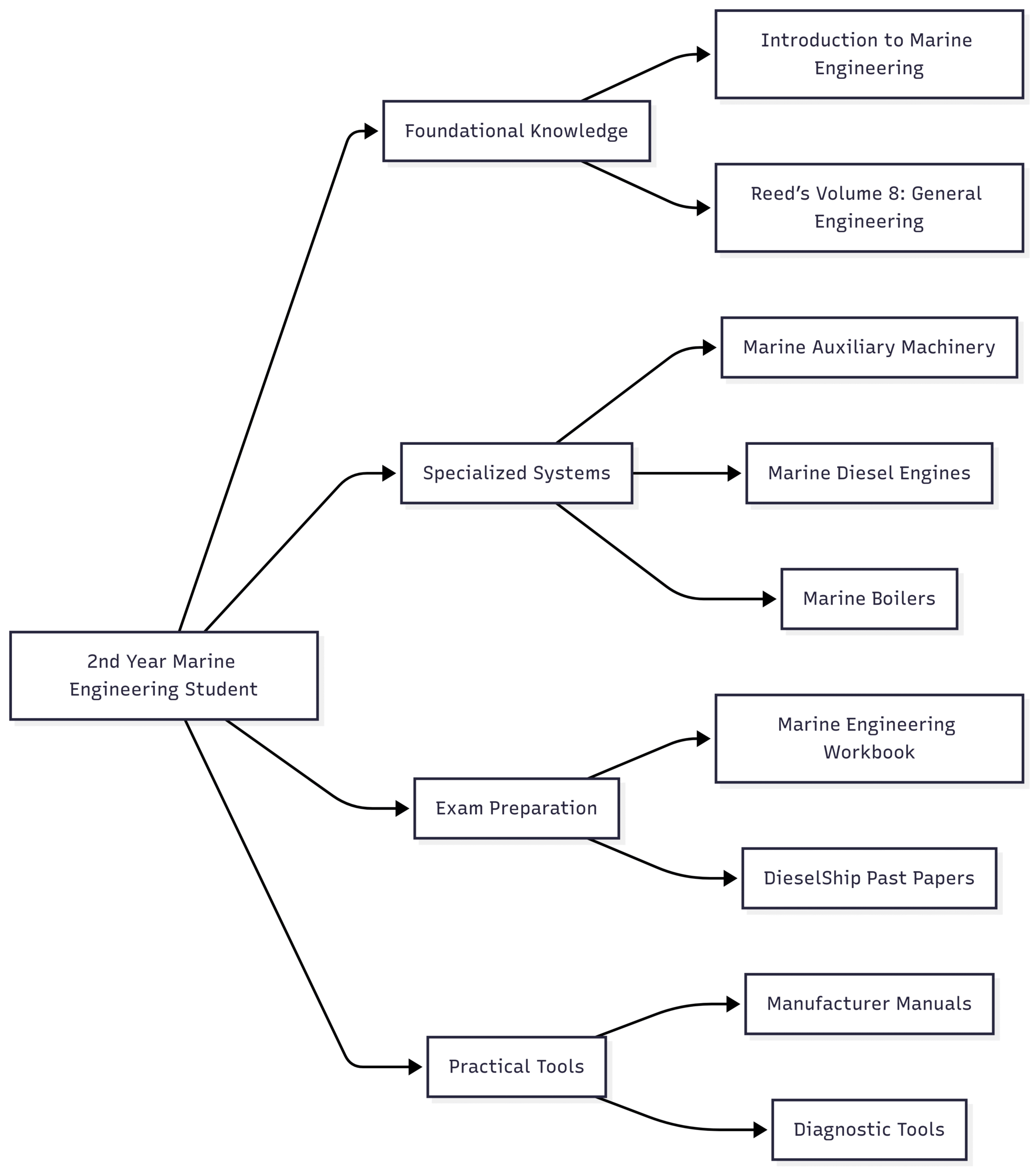
How to Choose the Right Book
For a second-year student in the Philippines, prioritize books that align with your curriculum and career goals:
- For Purifiers, Pumps, and Valves: Start with Marine Auxiliary Machinery by H.D. McGeorge for detailed technical insights, supplemented by manufacturer manuals.
- For Exam Preparation: Use Reed’s Marine Engineering Series (Volumes 8 and 12) and Marine Engineering Workbook for practice questions.
- For Broader Knowledge: Introduction to Naval Architecture and Practical Marine Electrical Knowledge provide interdisciplinary skills.
- Budget Considerations: Check platforms like Scribd for free PDFs or second-hand bookstores for affordable copies.
Table: Book Recommendations by Career Stage
| Career Stage | Recommended Books |
|---|---|
| Beginner (1st–2nd Year) | Introduction to Marine Engineering, Marine Auxiliary Machinery, Reed’s Volume 8 |
| Intermediate (3rd–4th Year) | Reed’s Volume 12, Marine Engineering Workbook, Marine Diesel Engines |
| Professional/Chief Engineer | Practical Marine Electrical Knowledge, Marine Boilers, Motor Ship Reference Book |
Practical Tips for Marine Engineering Students
- Combine Theory and Practice: Use books for theory and YouTube or manuals for hands-on demonstrations.
- Focus on Exam-Relevant Topics: Review past papers from DieselShip to identify key areas like thermodynamics, engine performance, and auxiliary systems.
- Stay Updated on Regulations: Understand MARPOL Annexes (e.g., Annex VI for emissions) and SOLAS for safety compliance.
- Network with Professionals: Join maritime forums or LinkedIn groups to connect with experienced engineers.
- Leverage Free Resources: Use Scribd’s free trial or open-access manufacturer manuals to save costs.
Conclusion
Marine ship engineers rely on a combination of technical knowledge, practical skills, and regulatory awareness to excel in their field. Books like Reed’s Marine Engineering Series, Marine Auxiliary Machinery, and Marine Diesel Engines provide the foundation and specialization needed for success. For a second-year student seeking to advance in purifiers, pumps, and valves, Marine Auxiliary Machinery by H.D. McGeorge and manufacturer manuals are the best next steps. Complement these with practical tools, online resources, and exam-focused workbooks to build a robust skill set. Continuous learning and hands-on practice will prepare you for a rewarding career in marine engineering, ensuring vessels operate safely and efficiently on the high seas.
Happy Boating!
Share Top-Rated Books for Marine Ship Engineers with your friends and leave a comment below with your thoughts.
Read Fuel Management and Compliance for Ships: Best Practices until we meet in the next article.
